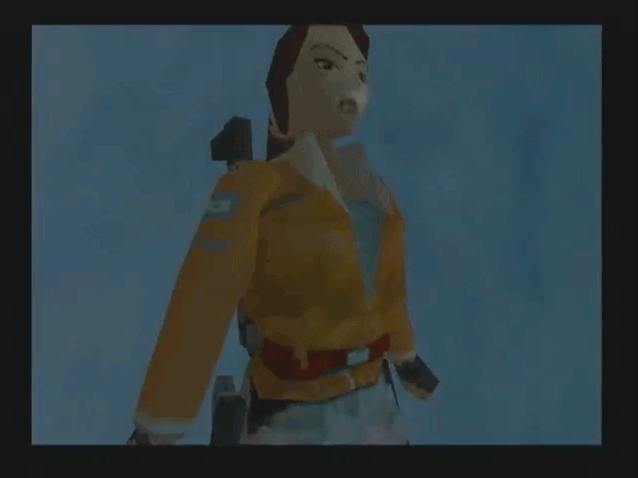
‘All serious art presents a challenge to its interlocutors, resists paraphrase and frustrates interpretation. The strange richness of Peggy Ahwesh’s filmmaking throws us up against the paucity of our own language. “Do I have words for what I am seeing?”: watching and re-watching her films provoke this question – the spectre of ineffability. This experience seems ever more curious when we consider the place granted to language in the films themselves. The films often cite (or even recite) any number of literary, theoretical and philosophical texts. Yet this practice of citation, appropriation and allusion, of folding language into, or asking it to hover above, the image is predicated on an understanding of the shortcomings of language itself. For Ahwesh’s work proceeds first from the act of seeing, or more accurately, looking – at the world and the bodies that inhabit it.
‘Ahwesh was reared in Cannonsburg, Pennsylvania, in her own words, “one of those sad industrial towns” near Pittsburgh. She went to school at Antioch College in the 1970s where she studied with Tony Conrad (“a father figure”) and was introduced to radical artists and filmmakers like Paul Sharits, Carolee Schneeman and Joyce Wieland. She returned to Pittsburgh after school, threw herself into its burgeoning punk scene and started shooting Super-8 films that documented, quite idiosyncratically, the things, people and places around her. In organising a film series at an art space called The Mattress Factory, Ahwesh decided to invite as her first guest George Romero, a Pittsburgh filmmaker himself, whose native city had paid him little notice before Ahwesh’s invitation. Their meeting led to Ahwesh’s working as a production assistant on Romero’s Creepshow (1982). The immersion in Romero’s phantasmagoria seems so uncannily fitting, given the trajectory of Ahwesh’s career, as to be nearly over-determined, yet, as anecdote (Ahwesh recalls that she was “assigned to entertain Stephen King’s son and played ‘Dungeons and Dragons’ with him”) it manifests the unstudied and nerdy cool of Ahwesh’s films themselves.
‘After the Romero stint Ahwesh moved to New York and continued making films and doing tech work at The Kitchen, one of the nerve centres of New York’s experimental performance scene. As her notoriety has increased over the past two decades she has been the subject of major museum retrospectives and the recipient of some of the most prestigious awards given to practising creative artists. At present she teaches at Bard College and continues to live in New York City.
‘Despite the Romero episode, biography does not go far in illuminating Ahwesh’s films, despite how much we actually sense her physical presence in many of the films themselves – behind the camera, on the soundtrack, etc. In fact, it is this palpable present-ness in her work that almost obviates the biographical crutch. For in looking at her work we feel summoned to participate in an epistemological experiment that is the very substance of the films themselves.
‘This is heady language – we might even think inappropriate – for discussing a body of artistic work in which memorable moments include a fake plastic hand playing a harp, a grown woman threatening to use a microphone as a dildo or Ahwesh herself playing the computer game Tomb Raider. Ahwesh’s is messy work – gloriously messy – and is deeply invested in the luxurious plenitude of the visual field. The films look great and yet are never merely pretty; they frustrate aestheticising, formalist tastes. Likewise, although the films often cite theoretical texts, they are never merely theoretical. They inhabit a strange stretch of territory in the world of experimental film and video, never exhibiting the formal shape of, say, a Hollis Frampton or the precise political clarity of a Su Friedrich. Ahwesh’s practice is a porous one, grounded on a radical technique of pastiche and aimed at unsettling categories and hierarchies.
‘As is always the case, it is better to attend to the films themselves than to belabour the qualities they share generally. I will start with The Deadman, a film Ahwesh made with her collaborator Keith Sanborn in 1990. It is one of her best-known films and one that immerses us straightaway into many of her preoccupations and methods.
‘The film grew out of Ahwesh and Sanborn’s interest in the work of Georges Bataille and in particular Bataille’s text Le Mort which Sanborn translated and on which the film is loosely based. Bataille’s investigations of the morbid and the transgressive found sympathy with Ahwesh’s Romero-inflected interest in the horror film. Shot in black and white 16 mm, The Deadman actually begins as a sort of horror film: its opening images are of a white frame house, shot from below, the time either dusk or dawn. On the soundtrack someone gasps in (what sounds like) agony. Next we hear the sound of breaking glass and the beating of bird wings, as the image cuts, first to a close up of chandelier, creaking as it sways from the ceiling, next to a shot of a man lying naked on rumpled bed sheets, his penis flaccid in the cradle of his thighs. Scoring the last image is the sound of a buzzing fly – a metonymic soundtrack of death and decay. The next shot is from the outside of the house again, as a woman, naked but for a thin plastic raincoat, leaves the house running. The naked man is the film’s ”Dead Man”, the woman, Marie. Ahwesh’s camera then follows her as she fucks, pisses, shits and vomits her way through the rest of the film. …
‘The film of Ahwesh’s that most determinedly takes on the subjects of sexuality and vision is undoubtedly The Color of Love (1994). Essentially it is a found footage film. According to Ahwesh, a friend dropped off a load of old film canisters that had been left outside, prey to the elements. Inside one canister Ahwesh discovered a Super-8mm pornographic film of two women making love to each other and to a man who appears to be dead or unconscious. The film had become degraded and decayed which gave it an amazing richness of color and texture. Ahwesh “did an improv on the optical printer”, “slowing some sections down and speeding others up a bit, repeating some things, and elongating the cunt shots”. Then she added a score of tango music. What resulted is one of the most beautiful and provocative artefacts in film history. The use of the tango music seems a clear nod in the direction of Un Chien andalou (Luis Buñuel, 1928). Like its surrealist predecessor, The Color of Love is an assault on the norms of vision. It is explicit; it shows too much. The seductive surface of the film (if ever there were a case for haptic cinema or embodied vision, this is it) draws us into a pas de deux of attraction and repulsion.
‘The Scary Movie (1993) is another collaboration with Martina Torr, who by the time the film was shot, was some years older than she was in Martina’s Playhouse. Shot in wonderfully high contrast black and white with very low key lighting, the film is one of Ahwesh’s most beautiful and most light-hearted; it is also the most reflexive of her many nods towards the horror genre. The film features Martina and co-star/playmate Sonja Mereu. While Martina is costumed in cheap girls’ dress up clothes, Sonja has a fake moustache, black gloves and prosthetic monster fingers. The first shot is a repetitive and jerky hand-held pan of a hand drawn music score while the sounds of Psycho-like violins play on the soundtrack. So begins what might be called an anatomising re-reading of the horror genre. The entire soundtrack is a pastiche of music and sounds native to the horror film – screams, strings, squeaking doors, footsteps, etc – although with a few corny phrases and sound effects that sound as though they’ve been lifted from a Warner Brothers cartoon. At various points a prosthetic rubber hand (obviously manipulated by a human extending from offscreen space) reaches mock-eerily to caress Martina who pretends to be asleep. Sonja probes/assaults Martina with kitchen tongs and later stabs her repeatedly with a tin-foil knife, and in turn is stabbed by the rubber hand wielding a similar weapon. In the middle of the film’s duration, Sonja holds up a poster announcing the credits (she is credited as the “Doctor/Killer”, Martina as the “Patient/Hand Lover”). Then we see the girls screaming, then dancing. They seem to have escaped their outing into the horror genre. The film ends. …
‘The contours of Ahwesh’s work expand far beyond the few examples I have discussed here. What holds the body of her work together is its global resistance to the notion of being held together, to boundaries, to resolution. Ahwesh’s explanation of her resistance to narrative might serve as a sort of ars poetica: “The reason I’ve never liked narrative is because traditionally narrative film has to have resolution. By the end, you’re supposed to be able to figure out why things happened the way they did. And I’ve always been more into presenting a problem and getting you into an emotional place where you understand the calamity or joy or desire within a person’s life. It’s like a texture, or a mood, a moment – not this is the story and this is how it turns out.”
‘This attitude has generated a labile openness and indeterminacy in Ahwesh’s work that has proved richly rewarding. While her films consistently engage and challenge us in their experiments with form, they do not present us with a closed textual or authorial system. They have, rather, the courage to act centrifugally – to fling us away from themselves and back into the world from which they come, of which they are a part and which they have enriched.’ — John David Rhodes, Senses of Cinema
____
Stills
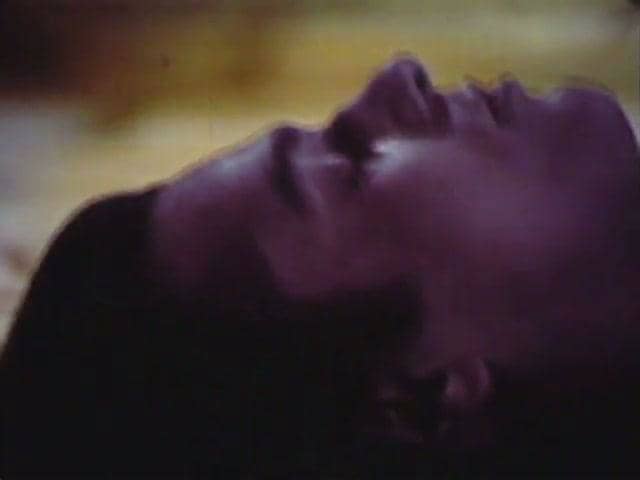

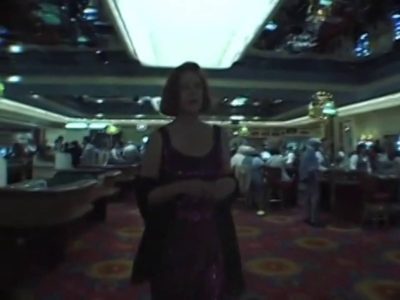


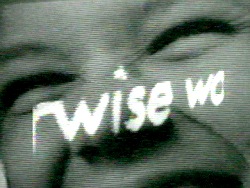

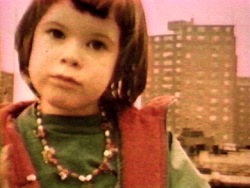
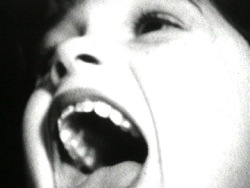

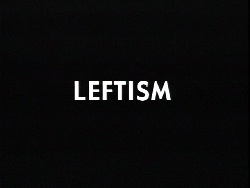
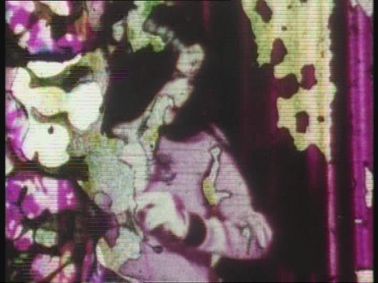
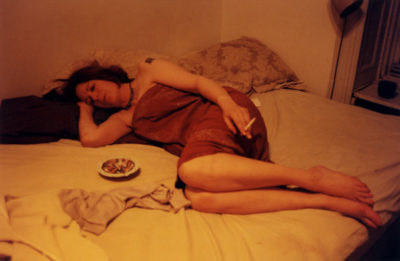

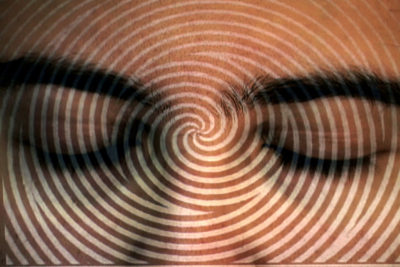
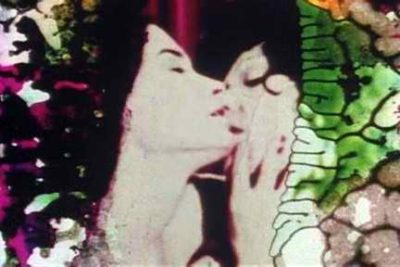
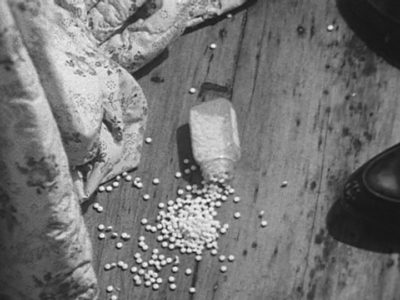
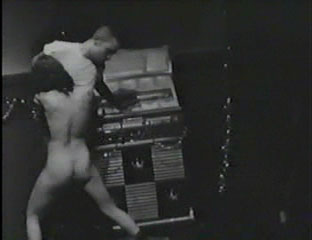

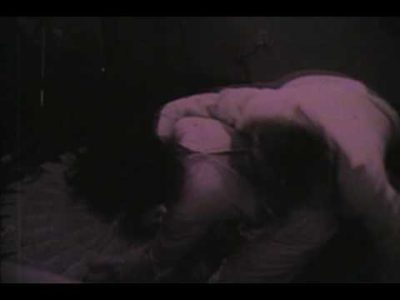


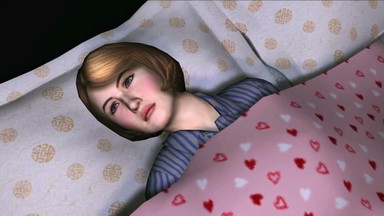
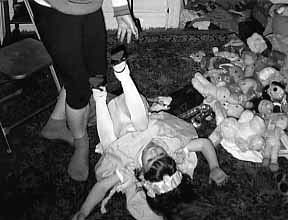
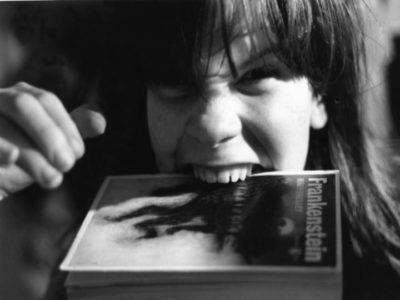
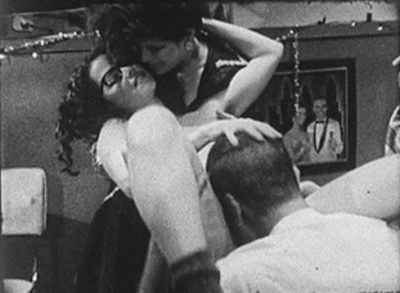




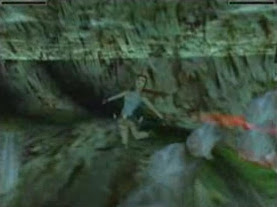
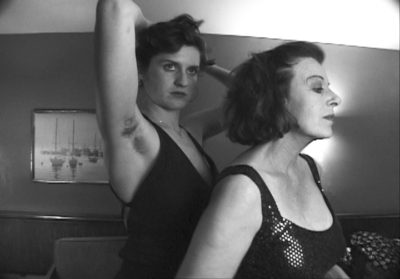

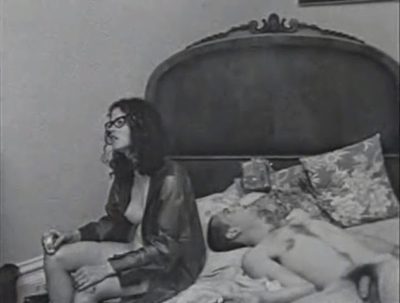

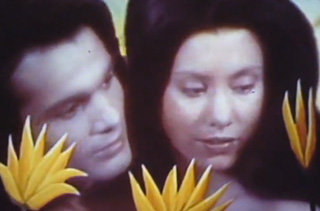
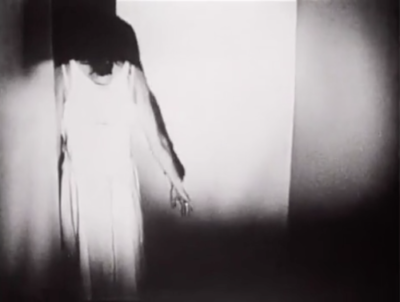
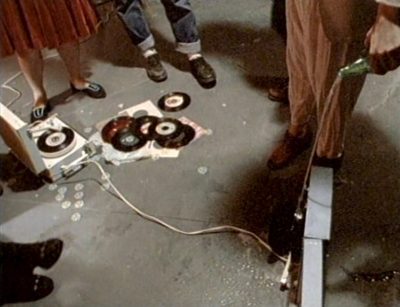

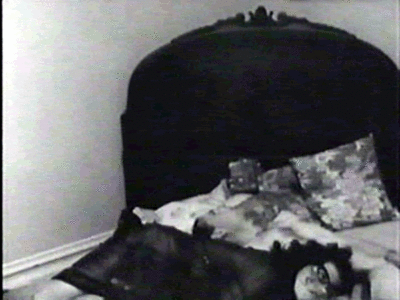
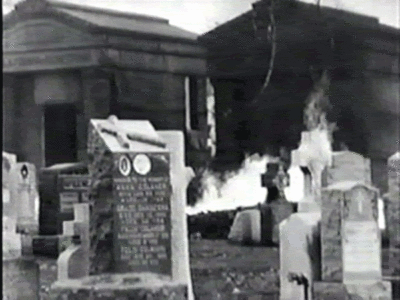
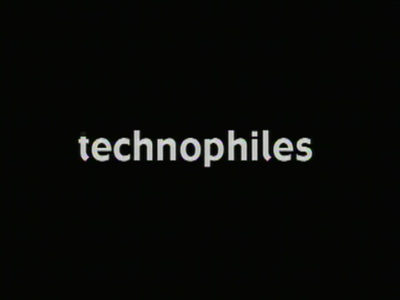

____
Further
Peggy Ahwesh’s Vimeo channel
PA @ Electronic Arts Intermix
PA @ Video Data Bank
Two Serious Ladies: Peggy Ahwesh and Jennifer Montgomery
PA @ Microscope Gallery
Peggy Ahwesh Stands By Her Man
PA @ IMDb
Corpse, corpus, contingency: Peggy Ahwesh’s ‘deadman’ trilogy
Vertov from Z to A edited by Peggy Ahwesh & Keith Sanborn
The Blind Field: Peggy Ahwesh’s Kissing Point
PA @ mubi
PEGGY AHWESH – THIS LONG CENTURY
NEASY ENTANGLEMENTS: FILMS AND VIDEOS BY PEGGY AHWESH
____
Extras
Episode 1 Module 5 – Peggy Ahwesh Interview
Midnight Moment April 2015: “City Thermogram”
Notes on the Death of Kodachrome
NYUFF ’08 Trailer by Peggy Ahwesh
_______
Interview
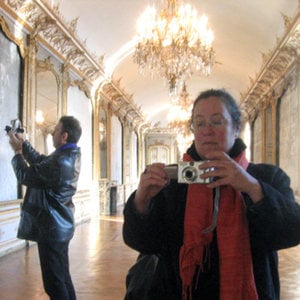
Scott MacDonald: You take pride in your Pittsburgh background, in part, I assume, because it’s been important in experimental filmmaking, with Pittsburgh Filmmakers, Field of Vision, the scholar Lucy Fischer at University of Pittsburgh. Also, it’s Warhol’s hometown. But maybe on some level it’s most of all George Romero. Is it true that you worked on George Romero films?
Peggy Ahwesh: Yeah. I moved back to Pittsburgh after college. I went to Antioch from 1972 until 1978. I studied with Tony Conrad, who I still think of affectionately as a father figure, the elder statesman in the field who bequeathed upon me the esoteric knowledge of initiation that propelled forward . . . [laughter] whatever. I also studied with Janis Lipzin. And Paul Sharits was there. Cecil Taylor was artist-in-residence. Jud Yalkut had a radio show that I listened to a lot. There was a lot going on.
I particularly remember a show Janis organized: Joyce Wieland, Carolee Schneemann, and Beverly Conrad did presentations. It was a major event for me to meet these women and hear them talk about their work.
I’m from a little coal town down river—Cannonsburg (famous for Perry Como and Bobby Vinton), one of those sad industrial towns. But I loved Pittsburgh and still have a lot of nostalgia for it. I found it very freeing, artistically; I felt like it was mine; the landscape was mine, the people were mine. Everything about it was up for grabs. I liked that it was “nowhere.” It was not overdetermined as an art melieu like New York.
I got very involved with the punk scene there in the late Seventies and made a lot of great friends overnight. We documented the punk bands, and we were all making Super-8 sound films, and there were all these crazy characters to put in your movies.
My first job was at this place called the Mattress Factory, which was just opening in the north side in what’s called the Mexican War streets, a rough-and-tumble working class neighborhood with slight gentrification. I’m sure that neighborhood has changed. The Mattress Factory was this big art warehouse, and I ran a film series there. For my first guest I decided to call George Romero. He told me that no one in Pittsburgh had ever invited him to show his work locally. I was the first. I couldn’t believe it.
He came with his wife, and we showed The Crazies [1973] and Night of the Living Dead [1968]; one program at the Mattress Factory and another in a local high school. It was great. He was so friendly, open, vulnerable, not an egomaniac in any sense. I also knew a lot of people who worked in his movies, including several of the guys who were the red-neck bikers in Dawn of the Dead [1979]; they were George’s lighting crew and worked locally.
I worked on Creepshow [1982] as a production assistant, but I did all kinds of bizarre jobs–like I was Adrienne Barbeau’s assistant at one point, which basically meant going out and buying her specialty foods because she had very particular tastes. And for about a week I was assigned to entertain Stephen King’s son and played “Dungeons and Dragons” with him. I had a walk-through in a shot where Adrienne Barbeau gets shot in the head at a lawn party. And I worked with the camera crew in the scene where the guy finds this meteor and the green stuff gets all over his place. People had to make the green stuff and dress the set, and I helped the camera people get the right amount of out-of-focus green stuff in the foreground and in the background.
I had a very flamboyant best friend, Natalka Voslakov. She’s in some of my movies, and I shot some of her movies. She was one of the staples of my Pittsburgh years, an incredibly striking woman. Of course, she got a much better job with Romero than I did [laughter]—she was first assistant to the assistant director. My friend, Margie Strosser, who I’ve worked with over the years, was an assistant editor. We all got to know each other.
MacDonald: Were you a fan of the films? Dawn of the Dead is a favorite of mine. Romero was so good about gender and race—and class: he gave us the first working-class American horror monsters.
Ahwesh: Oh yeah. I’d seen all the films: Martin [1978], and The Crazies [1973], and Season of the Witch [1972]. Night of the Living Dead [1968] is amazing.
At one point when I was working at Pittsburgh Filmmakers, George had given us a bunch of old film to re-use for slug–a whole collection of public service announcements he had done for local television, TV commercials about toilet cleansers, ads for candidates running for office, an anti-rape PSA, and a film about professional wrestling. I remember looking at this stuff to get the inside the enterprise that was George Romero. For me, he’s an important model for how to make independent personal films. I liked George’s style, and he was such a warm, human person. George’s groove was, “Have fun; make a movie; make friends; and mess around.” I liked that he was a genre filmmaker and able to penetrate the popular psyche in a really profound way. I like that he’s a populist. There was as little hierarchy as there could be on a feature film. Working with him was really fun.
Ed Harris was very open to hanging out with us local kids. He went out dancing with me, Natalka, and a couple of grips, at one of the local watering holes, and I remember having such a good time. By that time Natalka had been demoted to Production Assistant, just like me! [laughter]
MacDonald: Pittsburgh Filmmakers is going by this time, right?
Ahwesh: Yes. I worked as a programmer there for two years, during the time when Robert Haller was on his way out. I was the next generation. As a programmer I was free to do what I wanted, and I applied for grants and I brought in a lot of interesting people and did collaborations with local clubs and the University—a lot of things that couldn’t have happened under Haller.
MacDonald: At what point in this history do you start making films?
Ahwesh: I made Super-8 movies before Pittsburgh, at Antioch and elsewhere, but when I landed in Pittsburgh, everything sort of came together. I was very involved; my boyfriend was a filmmaker–all my friends were filmmakers, musicians, photographers. The punk scene was us and various hangers-on. We would document the bands, and the bands would play at the clubs where we showed movies—we were our own on-going entertainment.
In 1980 at Pittsburgh Filmmakers, I did a big group show of local filmmakers. I was hot on the idea of group shows because they got everybody involved.
I did some shows where I’d put people’s names in the calendar and make up titles for films they hadn’t made yet. For one particular show I announced “Wrapped in American Flags” by one person; “Dreams Congo” by another. But often people did make films to go along with these titles. That wasn’t a thing you could sustain, but it was fun as a programming concept. We had a good time with it. It was a kind of cinematic match-making that went hand in hand with the parties and general flirtations among us.
MacDonald: Tell me about your Pittsburgh Trilogy—Verite Opera, Paranormal Intelligence, Nostalgia for Paradise [all 1983].
Ahwesh: It was the summer of 1983, a very hot summer, when I was hanging out with this odd trilogy of people. There was my friend Roger, this very eccentric older guy who lived with his mother, didn’t have a phone. I’d write him a postcard and say, “I’d like to come film with you on Sunday,” and he would call me back from a pay phone.
His chess partner was a Black transvestite, Claudelle, whose boyfriend was in prison. Roger and Claudelle were a dynamic duo. I had gone over to film them playing chess at Claudelle’s house, so the scene of Verite Opera opens with Claudelle in her trashy apartment, cleaning up to get ready for me to be there. Then she puts on her costume, a blue evening gown and a turban, to play chess with Roger, this disheveled-looking, chubby, middle-aged guy. Roger was a member of MENSA, and always involved with these lonely hearts’ clubs, looking for an ideal mate with an IQ that corresponded to his. He would write to the women but never meet them. I shot a lot of footage of Roger’s attempts to find his high-IQ mate, but never made it into a film.
And finally, there was Margie Strosser, a soul-searching, articulate, concerned, naggie, feminist, aggravated-in-the-world person. Spikey red hair and tons of energy. I spent a summer with these three, and we shot a lot of film together. Basically I made three portrait films.
MacDonald: You titled it, I assume, after the Brakhage Pittsburgh Trilogy [The Act of Seeing with One’s Own Eyes, Eyes, Deus Ex (all 1971)].
Ahwesh: No. [laughter] No! Are his Pittsburgh films actually called The Pittsburgh Trilogy?
MacDonald: They are.
Ahwesh: I’d forgotten that. Hmmm, I might have known that back then.
MacDonald: If you were rebelling against the Masters, it might be a logical choice. Your trilogy is about personal friends; the focus of Brakhage’s trilogy is social institutions.
Ahwesh: Yeah. Whatever. I might have known that and wanted my own Pittsburgh Trilogy. I had seen those films of course, so I probably did know that at the time.
I love those Brakhage films, but I think it was just that I had three films and they were about Pittsburgh.
That was a great summer for me. The films—what are they about? I don’t know—they’re not diary films, and they’re not documentaries, and they’re not narratives. “Portraits” seems inadequate, actually, though that’s the word I usually use.
It’s more like me doing conceptual exercises so that I can figure out what kind of relationship I have with the person, and what kind of relationship the camera has with the person, and how do you shoot positive and negative space and what is it about people that makes them interesting? To me these three people were amazing examples of humanity, and I really liked them all.
Maybe every maker has a film in which they’re trying to work out what they want to convey through filmmaking. In any case, the lessons I learned that summer shooting those films I’ve carried with me ever since.
When I shot The Deadman [1990] in 16mm, people said, “Oh, she knows how to shoot! She knows how to use a camera!” But I felt that I was doing the same thing with The Deadman that I had done in all the Super-8 films, except that people just couldn’t recognize it as style in Super-8. In The Deadman I was just applying all the things I had learned in Super-8 to a different camera. To me, my emotional connection to the action and the sense of three-dimensional space were exactly the same.
MacDonald: Were you a movie-goer as a child or an adolescent?
Ahwesh: I was not a movie-goer. I was horrified by most movies. I thought they had bad gender politics, bad cultural politics, and were a waste of time. I was a hard-core idealist as a youth. My relationship to music was much more profound and organic, which is still the case. Basically, movies came second to music, but I did abhor popular films.
MacDonald: Even early in your life?
Ahwesh: Yes. I only started to be able to watch film in college and only unconventional films. I remember going into Kelly Hall at Antioch to see my first experimental film, Bruce Conner’s Cosmic Ray [1961], and the week after that, Masculine Feminine [1966, Jean-Luc Godard], but these films I did not understand. I was tortured by them, and found them completely infuriating–but they stuck in my craw. I couldn’t figure them out, but couldn’t forget about them either.
Of course, allowing myself to be turned onto them was a large area of growth for me. I come from a working class background. My parents are small-town, fairly conservative, church-going people who never cared about art.
MacDonald: We’re very similar in this. I sat all sullen in a theater in Greencastle, Indiana, making loud comments about how the audience (for Fellini’s 8 1/2) was a bunch of phonies for pretending that this gibberish made sense. But that stuck too.
Ahwesh: [laughter] Yeah, you decide at some point that you just have to face it. I entered college as a pre-med student interested in genetics, but when I started seeing these films, everything just flipped over for me.
MacDonald: Did you have to struggle with all the art experiences?
Ahwesh: No. I had a particularly hard time with the movies. Hearing Ives was a totally familiar, joyful experience. I was seventeen and had never been exposed to anything experimental, but it was almost like I was waiting for this change. My last years in high school were miserable. I spent all my time by myself or with the other discontents, taking acid—we were all miserable people. We’d go to the football games to sit in the corner and yell at our classmates, “You’re a bunch of jerks!” We’d go because there was nothing else to do.
The summer I was seventeen, I was in the Antioch College library and I listened to Ives’ The Unanswered Question. It changed my life. I understood pastiche from Ives, homage and dissonance, three elements I value in my own work. But my adjustment to the movies came later.
Those years, from sixteen to nineteen, having to figure out how language functions, symbolism, how to be a philosophical person, how to make meaning and communicate it—those things all came together for me with art-making.
MacDonald: When did you go to New York?
Ahwesh: I left Pittsburgh to go to New York in 1982. I had been there the year before, for a one-person show at the Collective for Living Cinema, and I remember thinking, “Oh, I should just move here!” So I went back to Pittsburgh, worked for Romero a little while, then just took off.
MacDonald: No matter how much film I see, every once in awhile, I run flat into a wall again. I think I’ve seen what there is to see, that I know what I like, that I understand what I need to understand; and all of a sudden, along comes stuff I just don’t get. It makes me furious, because all of a sudden I’m stupid again, and at least for awhile, don’t know what to do about it.
Martina’s Playhouse [1989] and The Deadman [1990] are the first two of your films I remember seeing; I saw both long after they came out. Martina made me feel I was on the other side of a generation gap. I couldn’t figure out what I was supposed to be doing with this film, what sort of pleasure I was supposed to take from it.
Ahwesh: That’s sort of cool.
MacDonald: I also feel that my feelings aren’t all that unusual, that lots of people feel the same–even if there are also lots of people, including many I respect, who do get it. I’m still struggling with Martina’s Playhouse. Of course, sometimes things come along and there’s nothing there, so you wait for awhile until it goes away. But this isn’t going away, so I figure it isn’t going away for a reason.
So who should I be to get what you mean to give?
Ahwesh: That’s not a fair question to ask a maker. Most artists don’t make things for a particular audience of people who are going to be “getting it.” The process is not that controlled.
But I can tell you what I did to make Martina’s Playhouse. I was working in complicity with the camera in a space somewhere between the stare of Warhol and the emotional intimacy of home-movies. It’s a terrain where most of my Super-8 movies are enacted. Formally, they’re very slippery movies.
MacDonald: Scary Movie—I think I do get. And if I get Scary Movie, I should get Martina’s Playhouse, right?
Ahwesh: Well, Martina’s Playhouse is much more complex. What you’re saying is that in Martina I’m not playing by the rules of experimental filmmaking you had come to expect. The work is not regulated by the formal devices of modernism–but what better way to address sexuality, girlhood, desire, and mothering than in a provocative home movie?
Formally my work is more like a younger generation’s work. Intellectually, I was formed by the Seventies. I come out of feminism and the anti-art sensibility of punk. I was in a Lacanian study group when I made Martina’s Playhouse. But formally, my structural models are more associative than those of other people who rely on structural modes.
MacDonald: When you told me you’re the same age as Su Friedrich, I was shocked—I think of you as a generation younger than Su.
Ahwesh: Actually, I’m a little older than Su. In Hide and Seek [1996] Su puts young girls in a narrative film where they’re playing with records and reproducing a Sixties girl party. In my movie, the vision machine [1997], I have adult women pretending to be girls, who smash the records and have a big fight and pour beer on the record player. It’s a very similar terrain, except that my imagistic and symbolic relation to experience is inverted. Su and I are friends and we think very similarly, except that my work shades one way and hers shades another.
MacDonald: Yours shades toward Jack Smith; hers, toward Frampton.
Ahwesh: Totally. I make a pastiche of many things. If I had to pick an experimental filmmaker whose philosophical method I borrow, it would be Jack Smith, although he’s one of the most irritating performers and filmmakers I’ve ever known. Just unbelievable. For years I did in Super-8 a lot of the things that he did. I would let people go on for hours and then turn the camera on, and they’d already be on the floor drunk and not able to function: “I thought we were gonna make a movie!” Or I would shoot all this stuff and just use the last roll. Or I’d rearrange the rolls in a way to make what I shot less coherent but more provocative.
Allowing something to erupt out of a nothingness–I love that. And that was already there in those first Pittsburgh films. Nothing was happening in Pittsburgh; we were just hanging around. “What can we do today?” “Let’s put on weird costumes and dance around. Let’s make a movie.” And things would just erupt out of seeming chaos. And films would get shot. Of course, editing was an entirely different part of the brain. As an editor, I was always interested in the things that were happening right in front of me that I didn’t recognize, but that I was involved in on some level.
In my personal relationships; I like people in transition. I’m most comfortable, I think, with people who are going through something—they’re having an ecstatic time, or a bad time, or a lot of things are happening and they’re overflowing with changes. I’m attracted to that.
MacDonald: In the case of Martina’s Playhouse, the incident that most people talk about is Martina “nursing” her mother. Did that just occur as they were playing? How much do you instigate the “eruptions” in your films?
Ahwesh: This is a question I get a lot, because when you make something that seems sort of unauthorized, or is not authoritarian, it’s hard to figure out who’s responsible and how, as a viewer, you should take it. In most movies, the plan of the producers is there, the directorial position of the filmmaker is there. Whereas with experimental film that’s the thing people can’t figure out. But all the material I’ve shot with Martina, and most of what I’ve shot with kids over the years—I’ve never had children–I could never have suggested in a million years. I don’t know that much about the behavior of kids, and I only know about the mother-daughter relationship as the daughter. The things happening in front of the camera were unknown to me, and I filmed them not really knowing precisely what I was filming. And that “nursing” footage sat on my shelf for two years, because I had no idea what to make of it or how to incorporate it.
MacDonald: I expect it’s pretty bizarre even for someone who’s had daughters.
Ahwesh: I’ve gotten a range of responses from people who have children, from “That happens all the time” to “You have destroyed the sacred sanctity of mother-daughter relationships!”
In my Super-8 movies I don’t stage things. I have no idea what I’m going to do, but I like not knowing.
MacDonald: How do you know you’re going to be shooting? Do you say you’re coming over to film?
Ahwesh: Yes, I say, “I’m coming over to film.” And I usually do film, though sometimes it doesn’t come out. Also, I have relationships with certain people who turn on when I come over with the camera; or people who call me and say, “I have a story to tell, and I want you to come over with the camera.” I say, “I’ll be over in twenty minutes.” That used to happen a lot.
I guess those days are over for me, because I’m known as a filmmaker now; I’m not just Peggy-with-a-camera. And the people I hang out with are photo-aware. They know I’m going to make something and show it at some uptown museum and that’s a turn-off. It was different when I made a Super-8 film in Pittsburgh and showed the camera original at a party. The people who are attracted to me now are much more performative, and on the whole I’m much less interested.
______________
15 of Peggy Ahwesh’s 23 films
_____________
The Deadman (1987)
‘Made in collaboration with Keith Sanborn, The Deadman is based on a story by Bataille, charting “the adventures of a near-naked heroine who sets in motion a scabrous free-from orgy before returning to the house to die — a combination of elegance, raunchy defilement and barbaric splendor.’ — Jonathan Rosenbaum
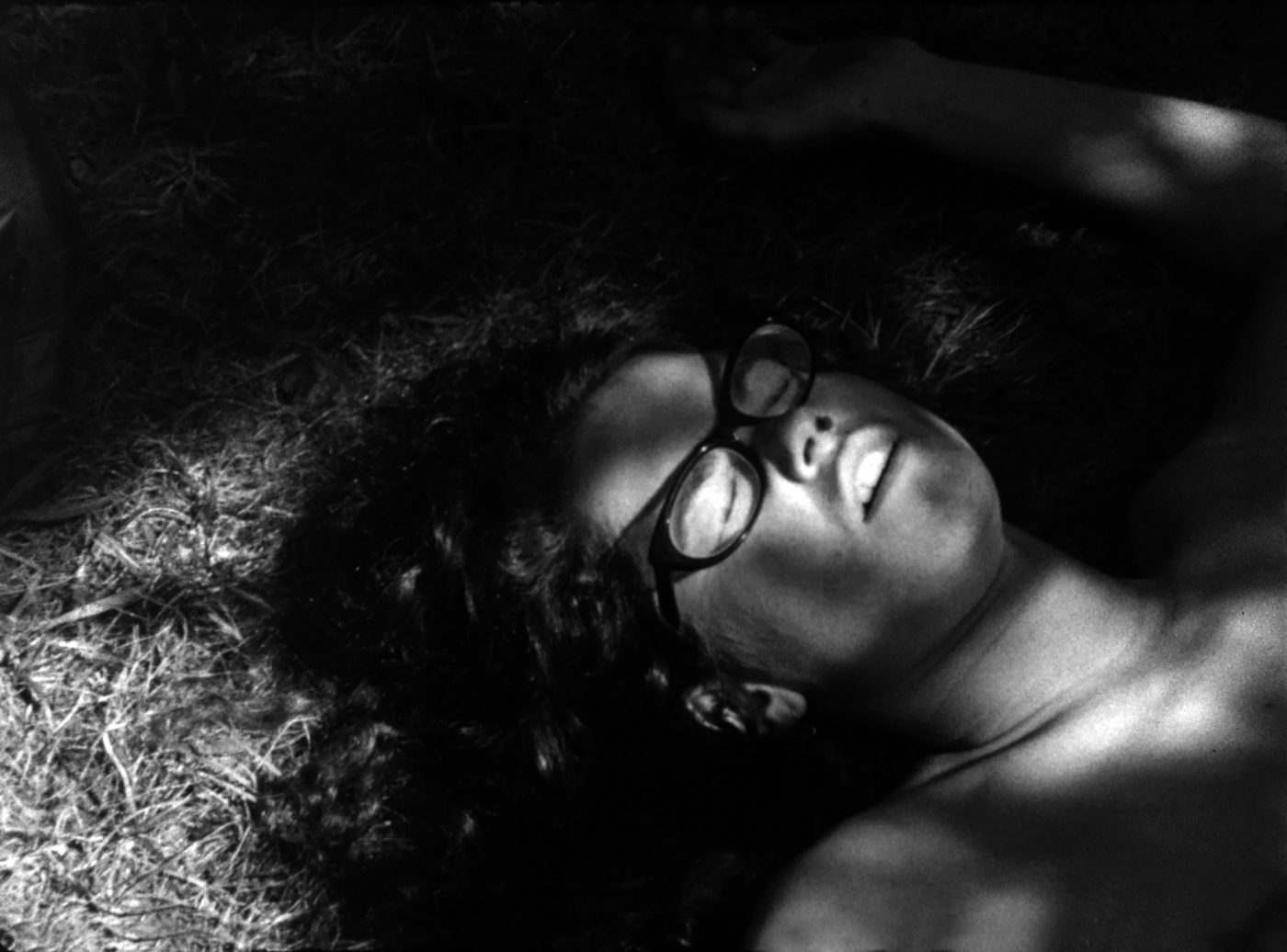
_____________
Philosophy in the Bedroom (1993)
‘In 1993, Peggy Ahwesh filmed her Super 8mm tribute to Marquis de Sade.’ — BOMB
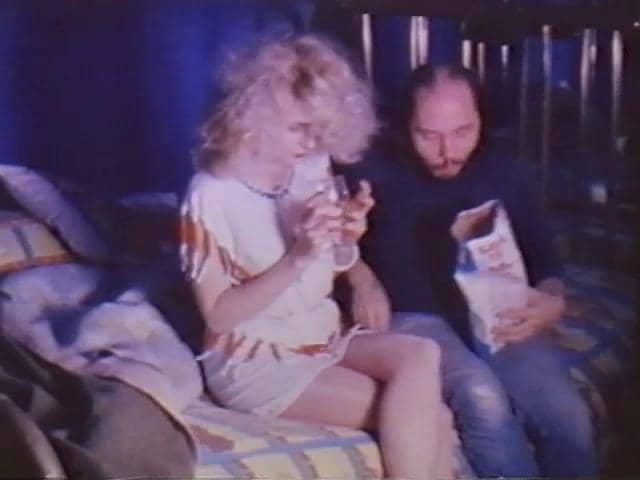
Watch the first half here.
Watch the second half here.
___________
Strange Weather (1993)
‘Strange Weather is about a moment when the roar of the elements becomes an imperceptible din and all belief is suspended. Jan, a paranoid, upper-class pipedreamer; Centipede, a sexually tepid rockhound; and Patty, strung-out on fantasies of the good life, comprise a stuporous enclave, protecting themselves against elemental moral decay from without. But storm warnings on the tube augur a fearsome change. Shot in Pixelvision, Peggy Ahwesh’s tainted soap opera is by visual definition a small world. Minute details—a smoldering cigarette, the grout between tiles, particles of kitty litter—are rendered large but with anemic resolution as though the characters’ surroundings have prominence but no meaning. In Strange Weather, Florida is anything but a picture postcard.’ — Steve Seid

____________
The Scary Movie (1993)
‘The Scary Movie toys with the creaky machinery of horror while simultaneously articulating an understanding of childhood as a joyously ludic domain, one part Romantic innocence, one part grand guignol. As well, it reveals the violence of the genre – violence usually directed against women – to be a play of silly and thoroughly controvertible conventions. While Ahwesh clearly enjoys indulging in the tropes of the horror film, she also is distant enough from it to end her film with her heroines fully alive and unscarred.’ — Senses of Cinema
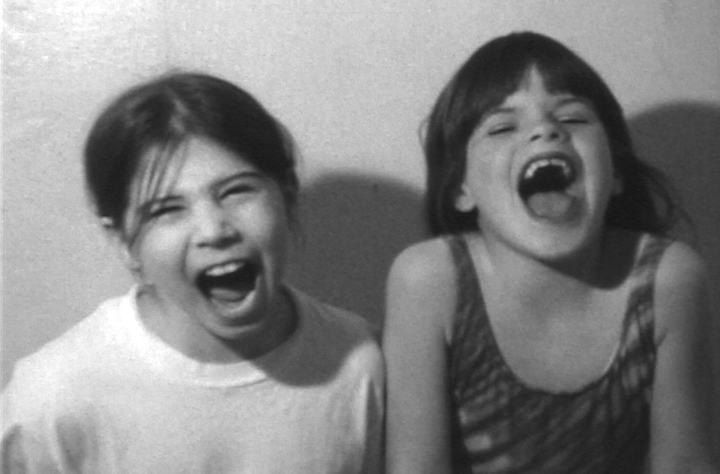
___________
The Color of Love (1994)
‘The pornographic film is narratively framed by a vampiric, necrophile motif that supports the affect of the morose, decadent, and elegiac: there is fake blood, a dagger, and a heavy red curtain. We need only recall Paul Willemen’s association of the “cinephiliac moment” with “overtones of necrophilia, of relating to something that is dead past, but alive in memory.”24 The dead (or sleeping?) man never revives himself and becomes a prop for the sexual activities between two women. The trope of death precedes the film’s death by disintegration, and the dead man functions allegorically, the “dead object” of porn and heterosexual masculinity. Yet he has to be present, stagily symbolic, to mediate the enactment of “lesbian” sex. He is playing dead, and the women are playing lesbians. This is part of the generic, tacit convention of pornography, and one that this pornographic film, typical and atypical at once, is enacting. Significantly, the fragment that Ahwesh has chosen to comprise the film offers no erection—the man’s penis remains flaccid through the film— and no “money shot,” two staples of the generic phallic “coherence” of commercial pornography.’ — Elena Gorfinkel
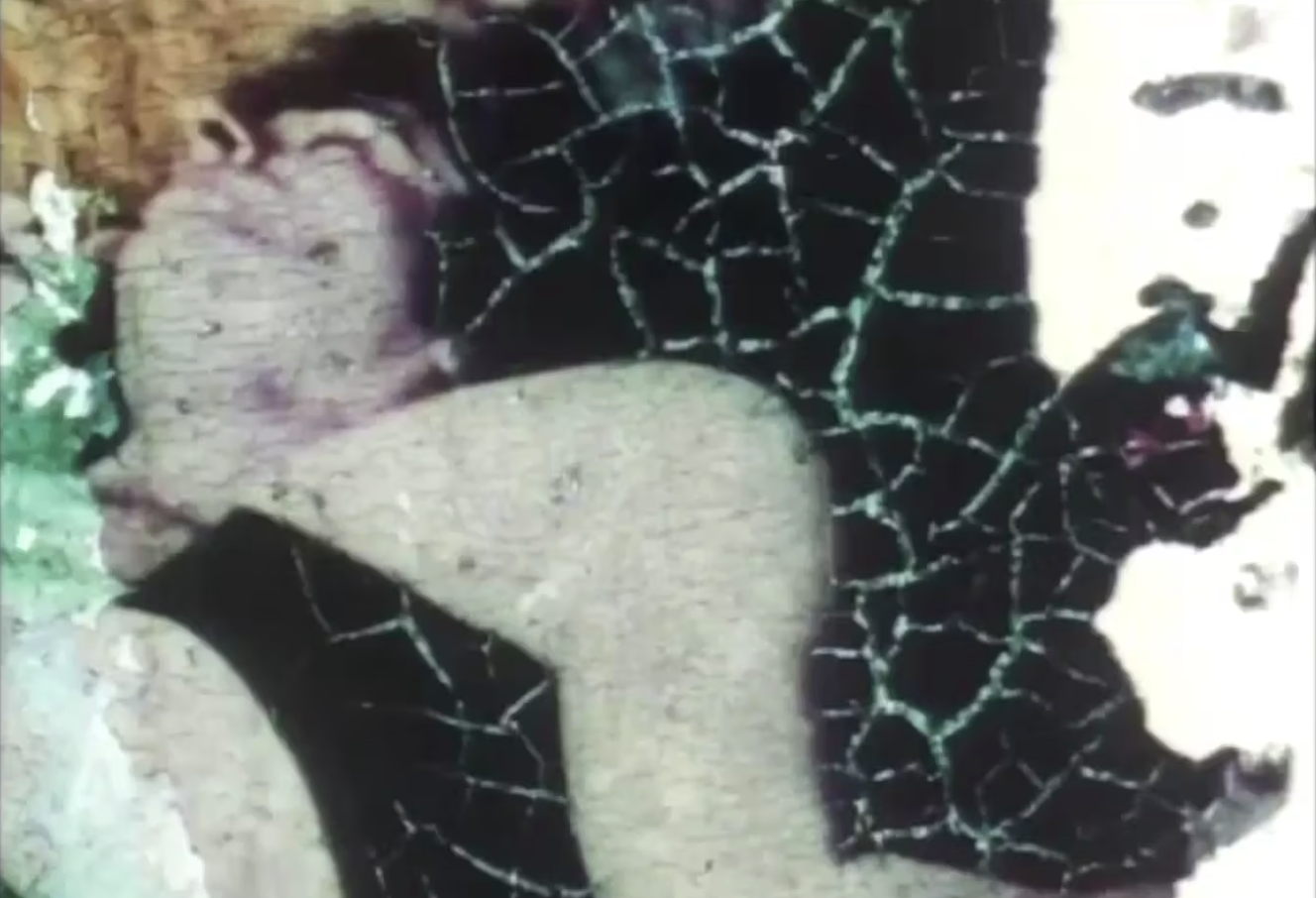
___________
The Vision Machine (1997)
‘The girls-only party scenes in THE VISION MACHINE have both the ruddy look of overexposed home movies and the richly burnished texture of Renaissance paintings cracking under their veneer. A riff on Duchamp’s Anemic Cinema (Ahwesh, with Keith Sanborn’s collaboration, inscribes the lyrics of ‘Wild Thing’ on a warped video version of a roto-relief) and on Bunuel’s Viridiana (here the lowlifes invading the manor are women artists), THE VISION MACHINE is an inspired depiction of girls dressing up and acting out, pleased as punch to have taken over the screen.’ — Amy Taubin, The Village Voice
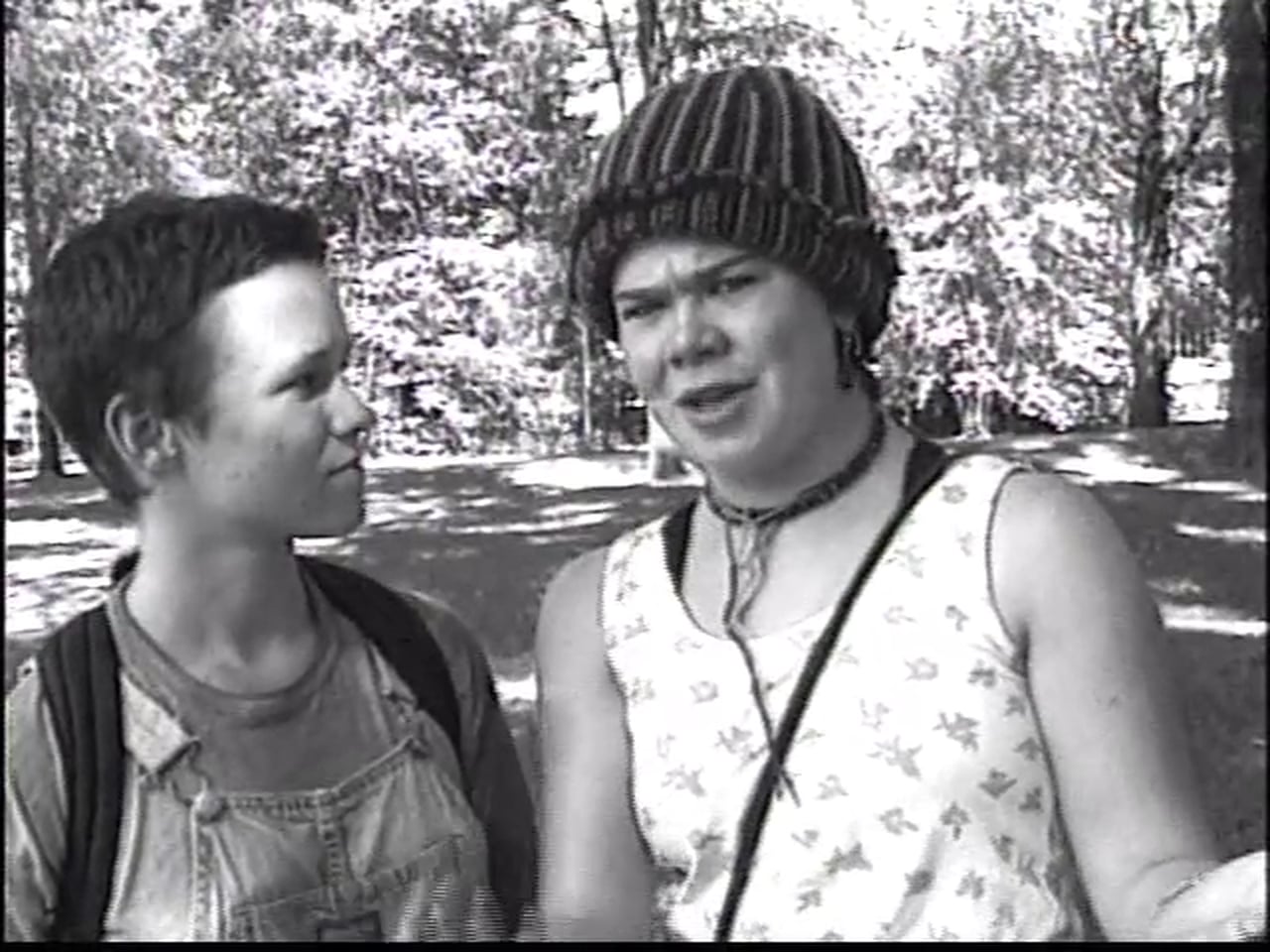
______________
Nocturne (1998)
‘Nocturne was largely shot in grainy black-and-white 16mm, a format that lends the film the look of a zero-budget knock-off of Romero’s Night of the Living Dead, with its jagged naked tree branches against white skies and black powerlines stretching across gray, featureless Pennsylvania fields and roadsides. It’s a desolate landscape familiar from American pastoral horror films, but what familiarity we may have is further destabilized by sequences shot with a consumer-grade Pixelvision camera, which suggest that what we’re watching is a home movie, unauthorized and unmoored from any cinematic tradition.’ — Not Coming
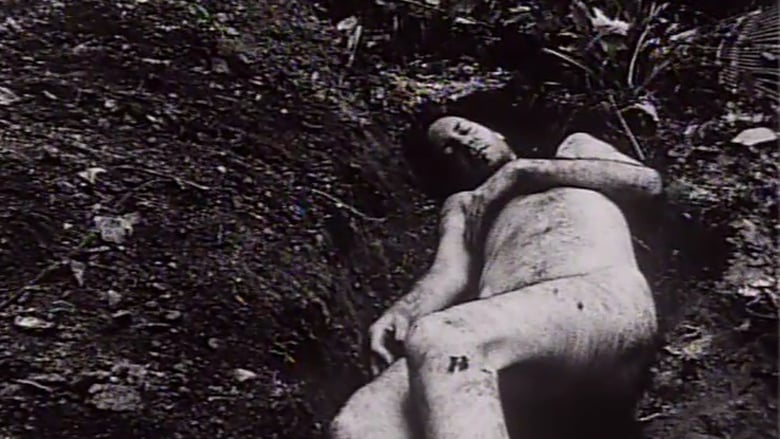
______________
73 Suspect Words (2000)
’73 Suspect Words is a deceptively simple and ultimately chilling meditation on the power of text. Ahwesh succinctly delves into one person’s obsessive irrationality, and his expressions of fear and anger. Based on a spell-check of the Unabomber’s manifesto, the work evokes the violence underlying the key words presented.’ — EAI

____________
Heaven’s Gate (2000)
‘With Heaven’s Gate, Ahwesh employs a strategy similar to that used in 73 Suspect Words: against a blank screen, a metronomic procession of single words unfolds, gradually building into a cool, minimal portrait of the apocalyptic paranoia that runs through the American social body. While 73 Suspect Words appropriated text from the writings of Theodore Kaczynski, aka the “Unabomber,” Heaven’s Gate takes up words from the Web site of the cult organization of that name, whose beliefs in extraterrestrial contact led to their 1997 mass suicide.’ — EAI
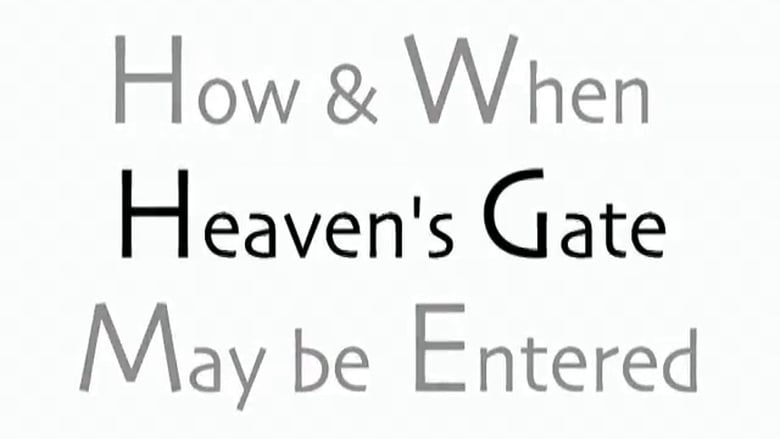
_____________
She Puppet (2001)
‘When it comes to experimental narratives, some ideas sound so terrible that it could by no means work, yet upon delivery and full realization it is something magical. This is the case with Peggy Ahwesh’s She Puppet which is merely a compilation of video footage from Tomb Raider video games spliced together in a non-linear way with voice overs from various feminist literature and poems. Yet simplicity by no means encapsulates what She Puppet becomes, Ahwesh’s work is profoundly reflective on the nature of humanity and the person hood of woman in relation to an existential existence and an indifferent world. It realizes the cinematic possibilities of video games by exploiting the glitches and hidden corners of the game in a way that transcends its initial purpose, without completely detaching the game from its original meaning. Furthermore, Ahwesh revises the entire nature of Tomb Raider by removing most of the sound and music from the film, a notable psychological element to video games. As I have noted many times prior, I adore found footage filmmaking and it is clear that She Puppet is one such film, yet its method of finding footage is uniquely its own and as such serves as a brilliant piece of extremely unconventional filmmaking.’ — Cinemalacrum

____________
The Star Eaters (2003)
‘The Star Eaters (2003, 24 minutes) An inconclusive treatise on women and gambling. The allure of risk taking and excessive behavior, play acting and a penchant for failure combine in this fairy-tale set in the abject landscape of decay and abandonment that was once glamorous Atlantic City. A sentimental education at the seashore off-season. Featuring performances by Jackie Smith, Alex Auder, Aaron Diskind and Ricardo Dominguez. Quotations by Georges Bataille, Maurice Blanchot and from the book Double Down: Reflections on Gambling and Loss by Frederick and Steven Barthelme.’ — PA
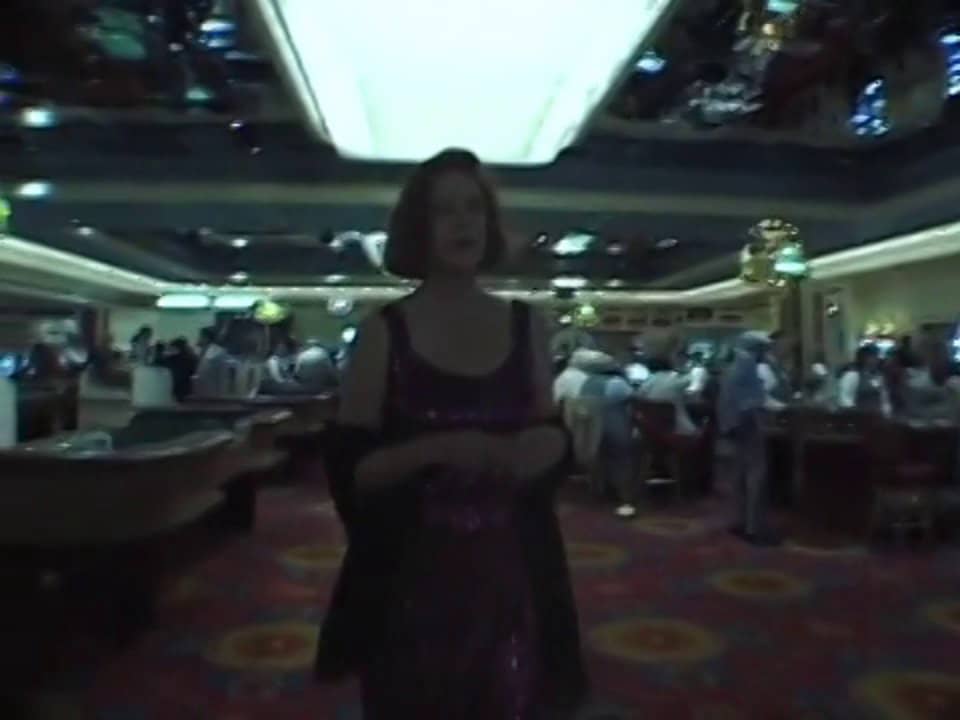
____________
The Third Body (2007)
‘An appropriated film, portraying the arrival of Adam and Eve to an exotic Eden, is intercut with appropriated videos of virtual reality demonstrations, among them a human hand shadowed by a computer-generated rendering, medical robots conducting a virtual surgery, and people dressed in bulky headgear navigating virtual spaces. As the title suggests, cyberspace adds to the Genesis legend a third possibility, a virtual existence that challenges natural and social definitions of gender and morality. Ahwesh writes, “The tropes of the garden, the originary moment of self knowledge and gendered awareness of the body (what is traditionally called sin) is mimicked in the early experiments with virtual reality. The metaphors used in our cutting edge future are restagings of our cultural memory of the garden. Wonderment regarding the self in space, boundaries of the body at the edge of consciousness and the inside and outside skin of perceptual knowledge.”‘ — EAI
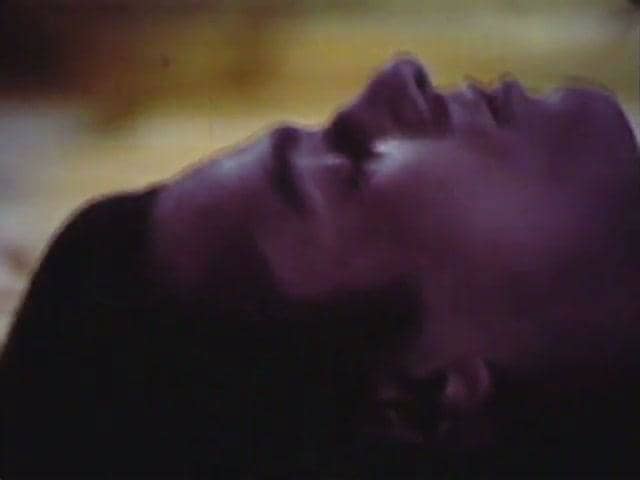
___________
Bethlehem (2009)
‘Interior and exterior spaces are transformed into mystical places in Peggy Ahwesh‘s lyrical meditation of an experimental short film, Bethlehem. While the film is mostly about general states of being, she does manage to tie in two actual Bethlehems: The most famous one in Jerusalem and the other one in mid-east Pennsylvania, which is Ahwesh’s home state. Ahwesh also alternates between inside and outside spaces, as well as between populated locations and people-less ones, giving all the same mythic quality through, obviously, the lyrical score, but also how the mostly non-moving camera soaks in its subjects through obtuse angles and framing. Many shots, particularly of Ahwesh’s human subjects, are from below or in intense close-up, granting them an element of grandeur even though they are occupying fairly mundane spaces. While the film has an epic quality to it, Ahwesh describes it as having a very personal basis.’ — Mike Everleth

____________
The Blackest Sea (2016)
‘Collaging appropriated CGI-animated clips from the Taiwanese news outlet TomoNews, The Blackest Sea juxtaposes the sky and sea as primordial phenomena against the anxious, bureaucratic features of modern human life. Hundreds of fish die and float to the top of the ocean due to pollution and rising temperatures; a deep-sea diver discovers a ceramic pot on the ocean floor; Syrian refugees flee across the ocean in tight-packed quarters, and a group of surfers spot the great white whale. By recontextualizing apocalyptic footage that is at once hyperrealistic and surreal, Ahwesh magnifies the ever-shifting relationship between news documentations of current events and the circumstances that produce them. Writes Peggy Ahwesh: “My intention is to force the source material to point back to itself and lay bare the gap between that sketchy cartoon world and reality.”’ — EAI
Excerpt
_____________
The Falling Sky (2017)
‘Refashioning the intention of footage lifted from an online animated news outlet, The Falling Sky is a cautionary tale about human foibles increasingly out of alignment with the forces of nature. The bombardment
of fragmentary information, discoveries, crises, gossip and opinion on a daily basis, forces we who are doomed to be ‘connected’ through technology through a slow drain of our subjectivity. The simple, hypnotic animations of the news from a YouTube database presents our collective prurient interests, fears and obsessions.’ — Peggy Ahwesh

*
p.s. Hey. ** Greg Masters, Hi, Greg! What a great pleasure to see you here. Thank you for coming in. I would love to read your recent books. If you don’t mind emailing me at denniscooper72@outlook.com, I can give you my nailing address or you can send me digital versions, whatever’s best. What a treat. ** Tosh Berman, Hi, Tosh, I just read you on Richard Hell’s book this weekend. Very nice piece. And I saw you in a crowd photo at Jack’s event. xo. ** Misanthrope, So how was ‘The Flash’. I’ve read a bunch of bad reviews since we last typed. I’ve never read ‘Zeno’s Conscience’. Good for you! ** A, Ha ha. Dude, I didn’t say don’t comment, I just asked you not to ask me if I finished your novel yet every day. Comment away freely. I haven’t read it yet, btw. We’re editing most waking hours right now. Early Happy B’day! Well, we could certainly use post funds, and that’s extremely kind of you. Let me find out how dire that situation is at the moment. I’m free-ish for King Kong stuff. I’ve just been waiting to hear from Derek. All the things on my lists are already released. Thanks, later, man. ** Bill, Thank you, B. Oh, right, the Kelly Link, I have to get that. And hear the music you kindly linked me to. How’s your week look? ** Cody Goodnight, Hi, Cody, I’m good. It pounded rain like crazy last night, so your hope for me was fulfilled, thank you. So how did the weekend end up filling in for you? I just saw friends and Zoomed a bit and wrote a bit and made blog posts because I’m a bit far behind due to severely less blog work time available. Have a lovely one. ** Mark, Hi. ‘I, Boombox’ is, of course, a treat. Jarry’s great. There was a guest post about him here. Let me see if I can find it. Hold on. Here. ** Steve Erickson, Hi. The Wire reviewed the Killah Priest album, and I chased it down and was totally charmed by it. Who’d have thunk? Fair number of music things on your list that I haven’t heard. Noted, thank you. Films too, actually. Doubled thanks. The Craig Baldwin book is a collection of his writings on film, his own films and others’. Very, very good. It must be a real relief to reconnect with your old therapist. Out of pocket is most unfortunate, obviously. ** Robert, Hi. There’s a recent documentary by Frederick Wiseman set in and called ‘Monrovia, Indiana’ which is a fantastic film and maybe a look-see into the vibe of that state? Do you know it? ** Andrew, Hi. Thank you very much, Andrew. I don’t know quite a few things on your list. I just scribbled them down. I’ve been curious about that Guston book. Thanks again, take care. ** fervorxo, Hi. LE COEUR DU MASTURBATEUR is just about to have its belated world premiere at a film festival here in France. I’m not sure what happens next, probably more festival showings before it shows up online? I think my place in the Skelley universe is fairly set, yes, ha ha. Yeah, I was/am really taken with the Water From Your Eyes album. I was listening to it constantly when I first got it. I’ve never seen Khanate, no. Stephen O is a friend and collaborator, and he says they’re going to tour later this year, I think. Thanks for your list. I somehow spaced on the Xiu Xiu, for instance. I have to grab that. Hope all’s great with you. ** Darbz 🐘🎪, Hi! I don’t know a word of German — okay, maybe a word or two — so I wouldn’t have caught the Magnum slip. I like it though. Yeah, I sometimes get really weirded out and melancholy when I realise that no one will remember my late parents other than me and my siblings because all of their friends are dead too. Kind of freaks me out. There are so many reasons why I always urge anyone who wants to be an artist to become artist. It’s so the best and richest possible life as far as I can tell. Cool about the doll making. Oh, wow, can I have a day to think about my doll’s name and colors? I’m rushing today to get out the door to the editing room. Thank you so much for wanting to make one for me! Hugs galore. ** _Black_Acrylic, Hi, Ben. Thanks. Right, I need to get that Surgeon album. Hooray for Scotland? ** Brian O’Connell, Hi, Brian! Always a great pleasure! What does your research fellowship involve? Congrats on that, btw. Evenson’s great, yeah, I need to catch up on his most recent tomes. For some reason I get prompts about that Lemon Twigs album every day in my social media feed. I guess that plus your rec. means I need to hear it. I liked Aster’s films okay, but not hugely. I thought ‘Beau Is Afraid’ was kind of a big mess, but I couldn’t deny the excitement level, especially for the first hour. After that it wore out its welcome with me a little bit. I’m good. My life is entirely about editing the film right now, but I’m very excited about it, so no complaints at all. Hope to see you again as soon as DC’s allure strikes you again. And big love back to you. ** Dominik, Hi!!! Well, naturally, about SCAB. I ain’t no fool. I don’t know ‘Tender Is the Flesh’. I’m on it. Is Vienna still revealing its marvels to you? Ha, oh, your love would be so, so welcome, let me tell you. Love going on this ride at Prater and telling me what it’s like, G. ** Toniok, Hi, man! Good to see you! Yay, a fellow ‘Skinamarink’ lover! High five! I’ve been meaning to see ‘Mantícora’. On it. I still haven’t read ‘The Shards’ yet. I need to find the free time. Ultra best to you! ** Thomas Moronic, No, thank you so much! Great about you hitting Paris. I should be here since we’ll be glued to the film until the fall. Wonderful! I really hope that plan cements. ** Okay, Today I devote a post to the super interesting, adventurous filmmaker Peggy Ahwesh. Since films like hers are so very difficult to see these days, I hope you’ll take the post as a golden opportunity. See you tomorrow.




 Now available in North America
Now available in North America 
Hi. l was not so hyped about Skinamarink but you made me curious so l will watch and tell you my impression. Must be very scary?
l started writing diary to train my writing voice. l am calling it Self-made. Do you experiment with automatic writing? l remember you saying you write raw style and do edits after. ls same with poems? lt is so freeing to explore all that emerges from the corners of your mind in writing and getting better with time. l feel more free every day
Do you feel writing stand alone sentences is perfect for me to get good at writing – l love writing this way and push my writings out there
People loved the poem, they sent me nice messages and it got many likes. Love from hotter than hot Creta <3
Dennis!!!!!! Eeek, such worthy mid-year names & titles. Your Dreams is another certifiable Thomas Moore hit yet breaks new shaky ground. Of course I devoured Jason McBride’s Acker bio. Good poetry titles too! My L.A. Fear of Kathy Acker event w Chris Kraus was a blast. Next week 2 NYC events: Powerhouse Arena w Stephanie LaCava (june 28), and John Giorno Foundation with Eileen Myles, Elaine Equi, Jerome Sala, Beckett Rosset and sweet surprizes! (July 1) Been doing a shit-load of podcasts, including Contain, with Barrett Avner. Here’s a kwik & dirty one i did for Hyperidian Press’s Empyrean Podcast: https://soundcloud.com/user-709182286/episode-13-fear-of-katchy-acker-w-jack-skelley?si=6c3c3304d5d94def954e1f4b8e36bcd8&utm_source=clipboard&utm_medium=text&utm_campaign=social_sharing
I’ll miss you and gang core this week… SAD!! Total Love, jack
Hey, Dennis,
So glad things are well, or that you’re excited, anyway. I’m extremely hyped for the film myself. I just recently rewatched “PGL” and found it even more perfect than the first time I saw it. Major good luck to you and Zac throughout the process. My fellowship is a research project about Terence Davies. I’m trying to write about the significance of corporeal suffering in his work, which, I think, has been somewhat under-written about or sidelined in most of the major criticism on him (which tends to be predominantly concerned with stuff like memory or time). Thank you for the congrats. I feel pretty good about it myself. Evenson’s most recent books have been excellent. The newest story collection is just wonderful; it sometimes finds him operating in this environmentalist polemic mode that could’ve failed terribly if he wasn’t so bleak and precise with his language. I have no idea if you’d dig the Twigs musically. I’d be very curious to hear whatever you might have to say about them anyway. I really love them, but I’ve never claimed to have good taste in music. The boys are cute, besides. I pretty much agree with you on “Beau”. The best stuff is definitely concentrated in the first section. Thanks for all the golden opportunities this post proffers, per your p.s. All the best going into the week.
Dennis, David and I enjoyed The Flash. I look at it in the context of superhero movies and I don’t think it is at all a bad movie. It’s almost 2 1/2 hours long but didn’t feel like it at all. The story made sense, the cameos were quick and respectful, and there was a good dose of humor seriousness. I liked it.
Frankly, I think these movies are dealing with superhero movie fatigue. Ain’t none of them doing what’s expected box-office-wise. I think people are tired of them in general.
Kayla’s coming over today. Should have some good laughs.
Tomorrow, I’ll be looking into getting this damn hernia repaired…again. Yikes. It should work out, though.
Haha okay, m8! Are you going to be taking a break from editing at all? I imagine that’s when you’ll do some reading. I’m so happy because I was getting a bit sad not being able to write everyday because I enjoy our little back and forth notes about life. I hear the heat is pretty brutal in Paris? Jesus, get us out of Summer. I’m over it, the second it starts. Sounds good about KK, all that and the ARC. I know I’m on the top of the growing-high demand DC’ ‘can you read my book?’ list. Thanks for the happy early bday wishes, as you know, it’ll be working all summer and hustling. We never stop, playa. I still do have trauma from how hard it was to get that book to Paris and how insane FedEx was and how no one could figure out how to ship it to your place, but you have it. It’s there. Now… don’t lose it and keep it safe or else you’re going to have to rip through a digital version!
Ha-ha! I’ve been Jarry obsessed since the late 1980s. I have several first editions and also some materials related to the College of Pataphysics. Back in the 1990s I sent some time hanging around 7 Rue Cassette and I eventually found someone who lived there and let me into the building. The entrance to the third floor and a half was still located off the staircase but the half floors had been removed. I did get some pictures of the door which was still in place, which, of course, is very pataphysical 😉
I searched for the name Peggy Ahwesh with my DVD suppliers but they’re probably not au fait with such adventurous filmmakers.
My sleeping problems kind of came to a head at the weekend when I spent most of Sunday in bed just catching up. Now that my body has had a chance to reset itself, I’m finding it possible to read and perhaps even write something without dozing off impromptu. From here, I’m hoping to settle into a more manageable routine.
Hi!!
I’ve never heard of Peggy Ahwesh. Her work seems super exciting. Thank you for the introduction!
“Tender Is the Flesh” is worth a read, I think. It came from a pretty… bleak place.
Last weekend was Pride weekend here in Vienna, so we went to the closing event on Saturday. In Hungary, I never go to the Pride Parade because there’s always an aura of threat surrounding it, with police troops and Nazis and shit like that – doesn’t exactly make me feel like celebrating anything. But we wanted to give Vienna a chance, and wow… Apparently, Pride is basically a festival here. Really, it was just like any other huge festival I’ve ever been to, only full of beautiful, super-exciting and inspiring, and very kind queer people. I’m not too big on crowds, so it was a bit astonishing and overwhelming, but I – we – had such a great time.
I’ll take love’s place and tell you about that Prater ride as soon as I get around to finally visiting it! Love listening to Placebo’s “Autoluminescent” on repeat, Od.
Hi Dennis.
How are you? I’m doing ok. Peggy Ahwesh’s films look very interesting, especially She Puppet. Which ones would you personally recommend? Congrats on the rain, Dennis! Right now it’s so hot where I am that some rain would be nice. Last night I screened Female Trouble to some friends and we had a blast. It’s my favorite movie, and it was fun to see it with a group of people. As of now, I’m watching Nelson Sullivan videos on YouTube. They’re very interesting. Hope you have a good day or night, Dennis!
I was able to get an appointment with my old therapist for Wednesday, so we’ll pick up then.
I finally bought a new laptop this afternoon. After it’s been charged a few hours, I’ll start downloading music apps. I plan to spend this evening trying to learn their ropes.
Two of my reviews were published today: Wes Anderson’s ASTEROID CITY (https://artsfuse.org/275344/film-review-asteroid-city-reality-is-besides-the-point/) and Militarie Gun’s LIFE UNDER THE GUN (https://www.slantmagazine.com/music/militarie-gun-life-under-the-gun-album-review/).
That Killah Priest album is not what I expected, but his spoken word psychedelia is appealing. I had no idea he’s been making music steadily since 1996, with a new album on the way this summer, but at least he’s not resting on his laurels. (He also has a YouTube podcast which seems to be about Five Percent Nation beliefs and conspiracy theories, at least from the video titles.)
Hi Dennis,
Although my youth is dwindling (I’m turning 25 tomorrow) I’m still reaching out on behalf of our youth when I ask will you read in the next Factory Made? It’d be the best birthday gift ever. The next installment (between you, me, and everyone reading this blog) will be an ode to JT Leroy with Laura Albert reading new material for the first time. As someone who was so close to the phenomenon, I think you’d be a wonderful addition to the insane line up. The reading will either take place on July 21st or 28th of next month in Los Angeles. Hope you can make it. Talk soon xx
Hey Dennis,
I love Peggy Ahwesh! Hope you’re well! I moved to Arkansas in December and I am adjusting nicely. Hoping to get a job teaching English at the local college. I know my publisher sent you a copy of my last poetry book in 2022. Did you get it?
xo.